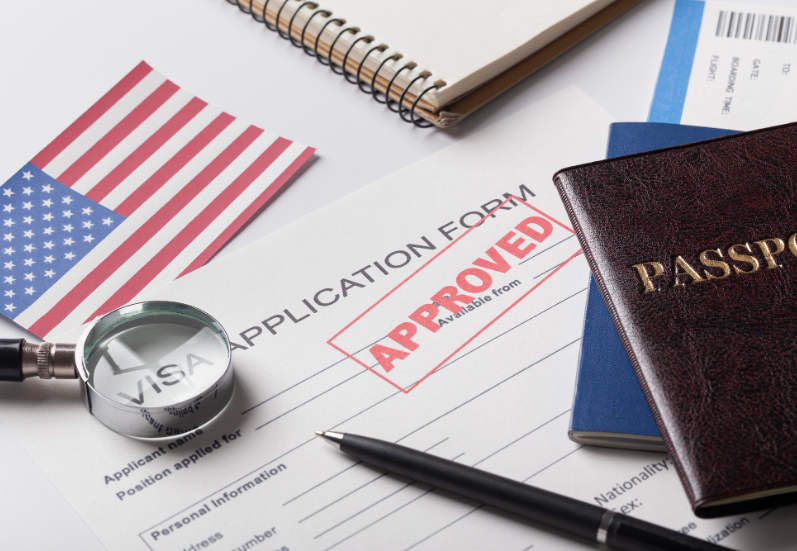
If you’re working through an immigration process—like getting a green card, visa, or even applying for citizenship—then you already know how paperwork-heavy it can be. Every form, every detail… it all matters. One of the biggest things people overlook, though? Getting their personal documents translated the right way.
This isn’t just about convenience. USCIS (yeah, those guys) has strict rules. If your USCIS translation certifications are not up to their standards, your whole case can get delayed—or worse, denied. Not fun.
Let’s talk about why certified translations matter, how they work, and how to choose USCIS translation services that won’t screw things up.
Why IS USCIS Translation Certification Required?
Basically, if you’re sending in any documents that aren’t in English, USCIS wants to see a full translation. Not just a summary. Not just the important parts. They want everything translated—and certified.
That means a translator has to include a signed note (called a certificate of accuracy) saying the translation is complete and accurate, to the best of their knowledge.
Here’s what usually needs translating:
- Birth certificates
- Marriage or divorce docs
- School transcripts or diplomas
- ID cards or passports
- Medical paperwork
- Legal rulings, contracts, stuff like that
Skip the certified part or mess it up, and you’re probably looking at delays. Or they’ll hit you with a request for evidence (RFE), which is basically their way of saying, “Try again.”
What Makes A Translation “Certified”?
So what exactly is a certified translation? It’s not just someone who speaks two languages doing a quick translation and calling it a day.
A proper certified translation has:
- A full, accurate version of the original doc
- A certificate of accuracy signed by the translator or translation service
- Their contact info (they need to be reachable)
- Everything included—no skipping handwritten notes, stamps, or weird formatting
And no, the translator doesn’t need to be approved by the government. USCIS doesn’t care about that. They just care that the translation is complete and certified.
Key Features To Look For In USCIS Translation Services
Okay, let’s say you’re shopping around for a service. Here’s what you should really pay attention to:
1. USCIS Rule Compliance
They’ve gotta know the USCIS requirements cold. No guesswork here. If they miss something technical, your doc might get tossed out.
2. Translation Accuracy
Legal and official documents can be picky. You want a translator who knows their stuff—not someone guessing what legal terms mean.
3. Privacy & Security
These are your personal docs. Make sure the service has secure uploads and doesn’t store your info somewhere sketchy.
4. Clear Pricing
Avoid vague “per-page” quotes. Go with services that charge by the word—it’s just more fair. Why pay more for a mostly blank page?
5. Fast Turnaround
Sometimes you’re racing the clock. Some places offer 24-hour delivery, which is great—but check that the quality doesn’t drop with speed.
6. Revisions & Support
Things happen. If USCIS asks for a small tweak, the service should fix it without charging you again. That’s just good business.
How to Evaluate A Translation Provider
Not all translation companies are worth your time. Here’s how to find the ones that actually know what they’re doing:
- Check for legit affiliations – Are they part of the ATA (American Translators Association) or anything similar? That adds some trust.
- Look at real customer reviews – Not just the cherry-picked ones. Dig into what people are saying about accuracy, timing, and whether USCIS accepted the work.
- Use their quote tool – A decent provider lets you upload your doc and gives you an instant, transparent quote. No games.
- Ask if they back up their work – Will they fix things for free if USCIS doesn’t accept the translation? They should.
Common Mistakes To Avoid
So many people run into trouble just because of little mistakes that could’ve been avoided. Here are a few:
- Don’t rely on Google Translate. Ever. USCIS will spot that a mile away.
- Don’t have a friend or cousin do it (unless they’re a pro and can provide a certification).
- Also, don’t skip translating handwritten notes, seals, or anything else—even if it seems unimportant.
- Don’t submit partial documents. Every page matters, even the weird blank ones with notes in the corner.
Why Choosing The Right Service Matters
Let’s be real—immigration is stressful enough. The last thing you need is to get flagged for a document issue you could’ve avoided. A delay or rejection can affect your job, your family plans, or even your visa status.
That’s why using a professional USCIS translation service is so important. They know the rules, they get the details right, and they give you peace of mind that your paperwork won’t hold you back.
Certling – Trusted USCIS Translation Service
If you’re looking for a reliable option, check out Certling. They specialize in certified translations for official documents—everything from bank statements to birth and marriage certificates.
What they offer:
- Instant pricing based on word count
- Translations that USCIS accepts
- Rush delivery if you’re on a deadline
- Strong data privacy protections
- Free revisions if needed
They use smart tools to speed things up, but the actual translation is handled by humans. So you get both speed and accuracy.
Take The Process Seriously
Finding the right translation service can seriously smooth out your immigration process. Look for one that knows USCIS translation certification standards, doesn’t play pricing games, and supports you if anything needs fixing.
Once your translations are certified and good to go, you can move ahead with your application knowing that this piece is handled. And that’s one less thing to stress about.
Frequently Asked Questions (FAQs)
While discussing USCIS translation certification, here are some of the common questions people ask.
Usually 1–3 business days. Some offer rush service—sometimes even same-day—but you’ll probably pay more.
Nope. USCIS doesn’t require notarized translations. They just want the signed certification. That said, if you’re using the document somewhere else, like a school or court, check their rules.
Sorry, no. USCIS won’t accept translations done by the applicant or their family members. Best to use a professional—it’s just not worth the risk.
If you went with a decent provider, they should fix it for free. Always double-check their revision policy before you place the order.










0 Reply
No comments yet.